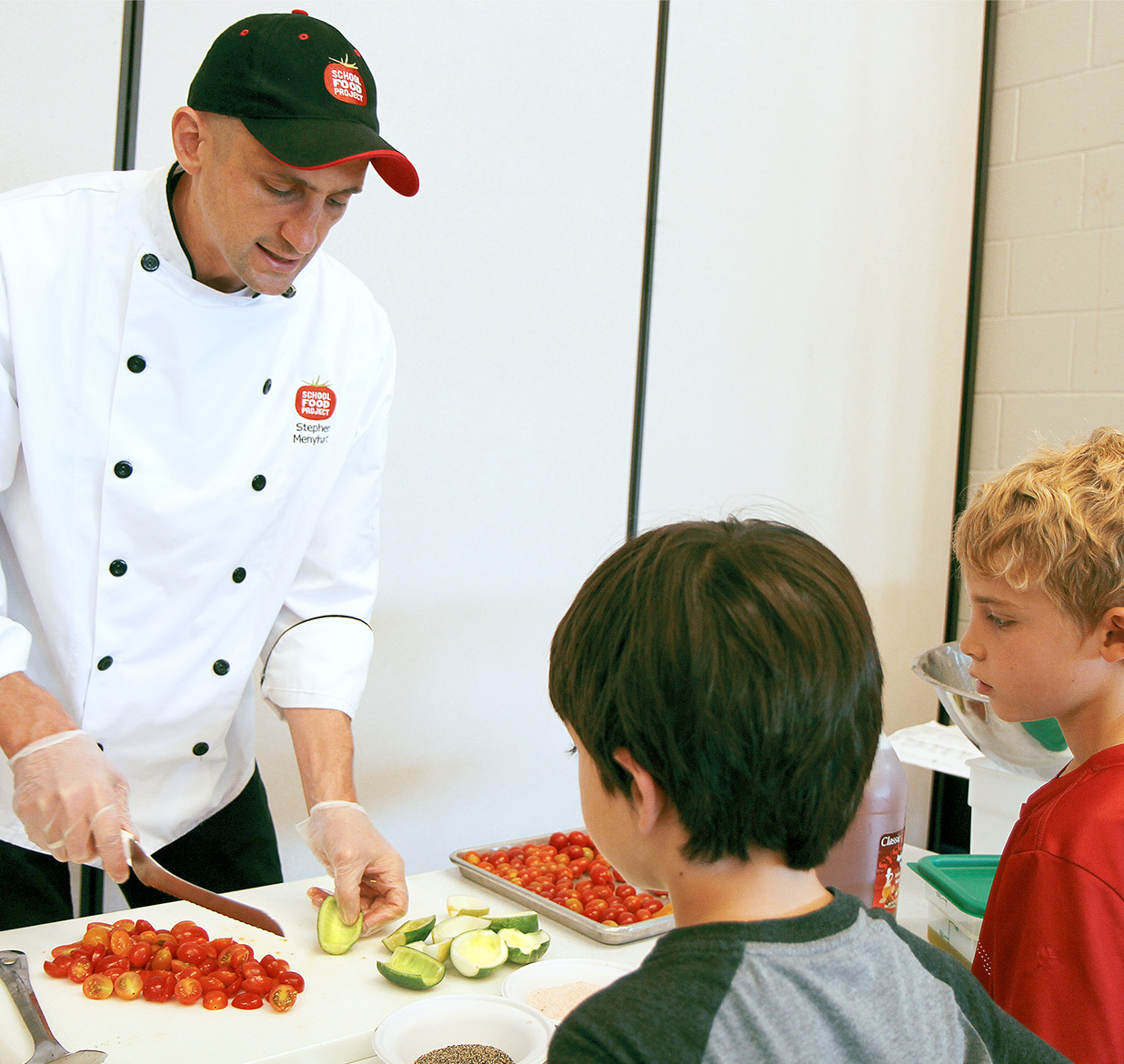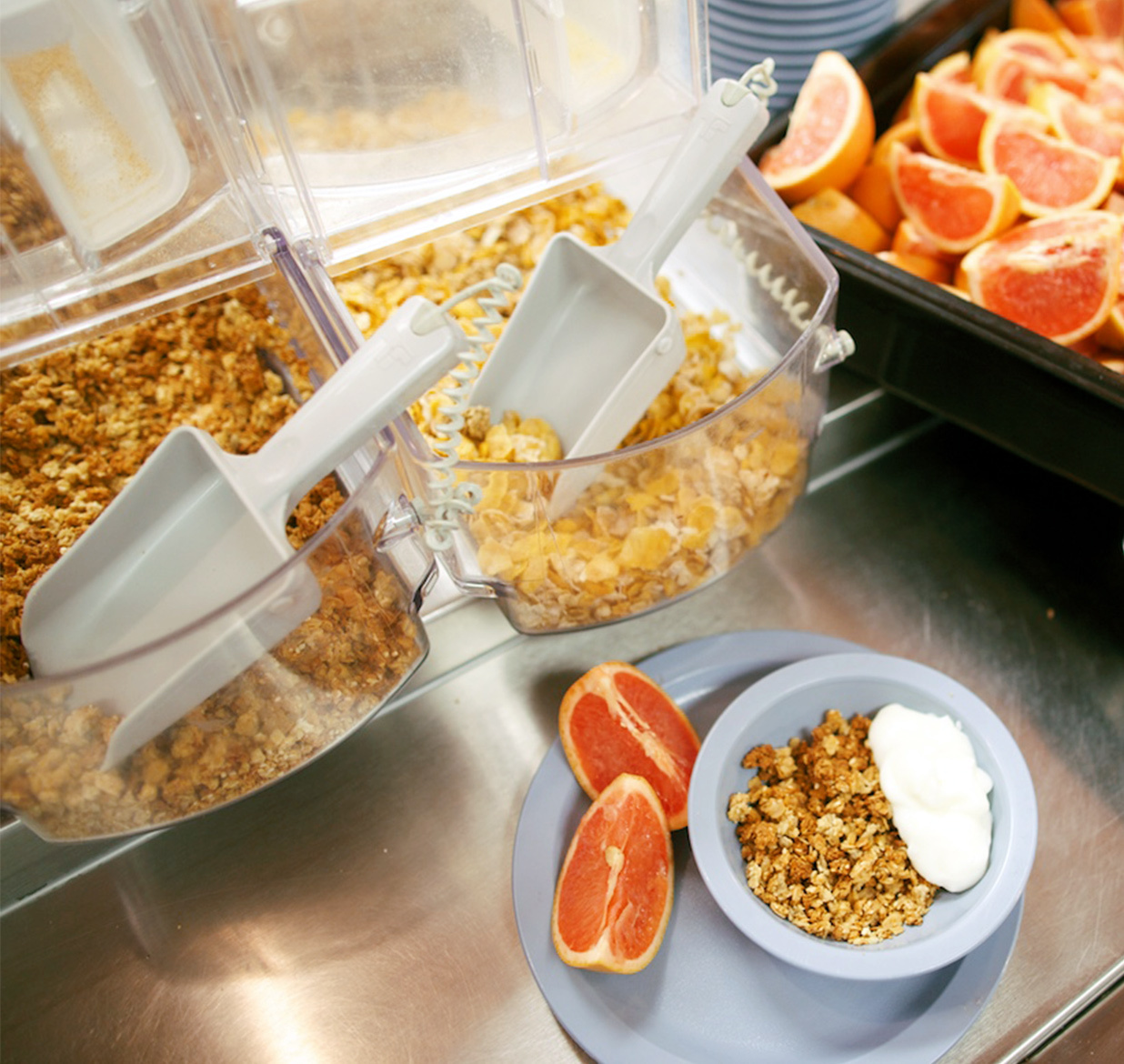
Step 4: Take Action
This section encourages you and your advocacy group to move into identifying exactly how you want to change your school’s environment. You’ll find ideas and resources for programs and an example outline of bite-sized steps so that you can create opportunities for shared responsibility among members of your group and ensure completion.
The School Food Advocacy Toolkit covers: Get Educated, Get Organized, Get Support, Take Action (current page).

Step 4: Take Action
This section encourages you and your advocacy group to move into identifying exactly how you want to change your school’s environment. You’ll find ideas and resources for programs and an example outline of bite-sized steps so that you can create opportunities for shared responsibility among members of your group and ensure completion.
The School Food Advocacy Toolkit covers: Get Educated, Get Organized, Get Support, Take Action (current page).
The sooner that your advocacy group moves into identifying how you’d like to influence change in your school, the better. Identifying a program that already exists and can be customized for your school community is a great place to start. These programs offer possible solutions to some of the challenges and obstacles in your school.
Every school is different, so what works in one school may not work in another. When reviewing these programs, consider the unique factors for your school community. You’ll notice that not all healthy food programming is in the school cafeteria. In fact, it’s important to address the issue in the classroom, in after-school activities, and at home.
Here are some programs to consider. Some of these programs include funding opportunities, while others may require your advocacy group to raise funds for supplies. In the case that funding is available, you may need to work in partnership with your school’s administration to apply for grants.
Grants
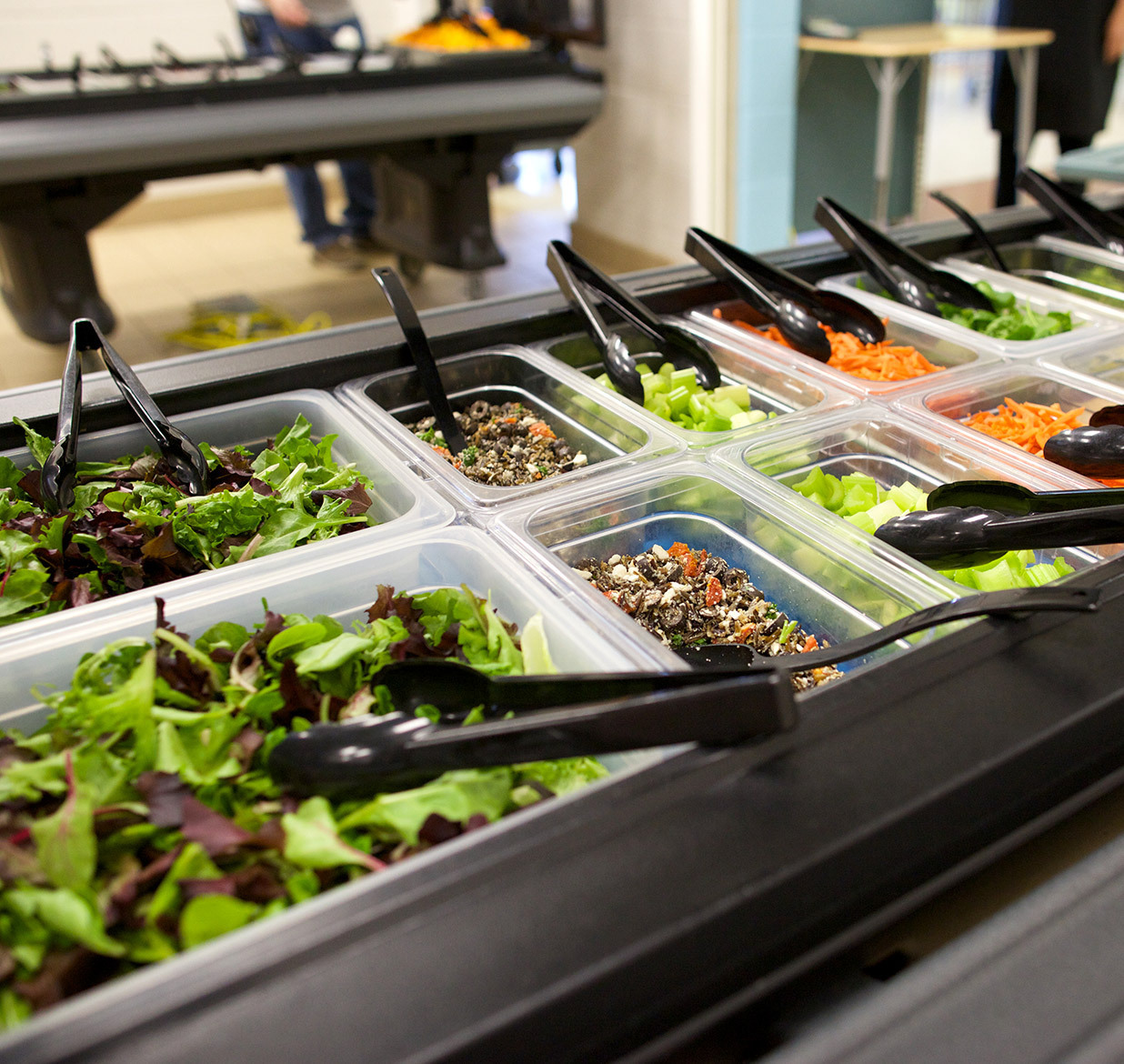
Salad Bars to Schools
School administration applies for funding to provide salad bars in their school. Salad bars can be utilized as a reimbursable meal or as part of a reimbursable meal. The salad bar toolkit is specifically designed for families who want to support the program, complete with a sample letter to the school district. Once your school receives a salad bar, there is a wealth of information to support its implementation in the cafeteria on The Lunch Box.
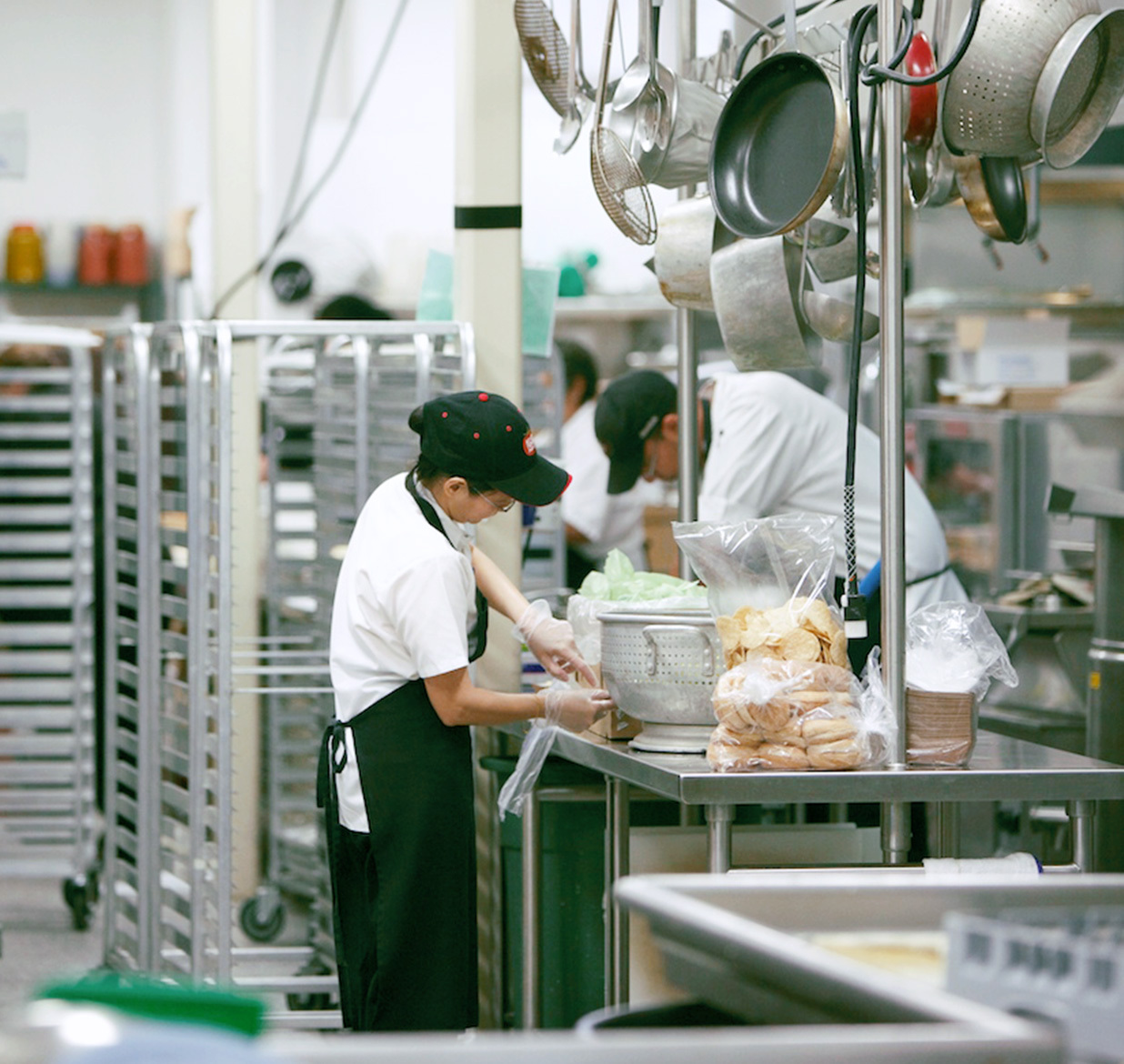
Get Schools Cooking
School administration applies to receive support for their food services program for three years. This program provides a deep dive into school food reform that helps motivated school districts transition to scratch-cook operations. This technical assistance program includes a workshop, onsite assessment and strategic planning, peer-to-peer collaboration, technical assistance, and potential equipment grants.
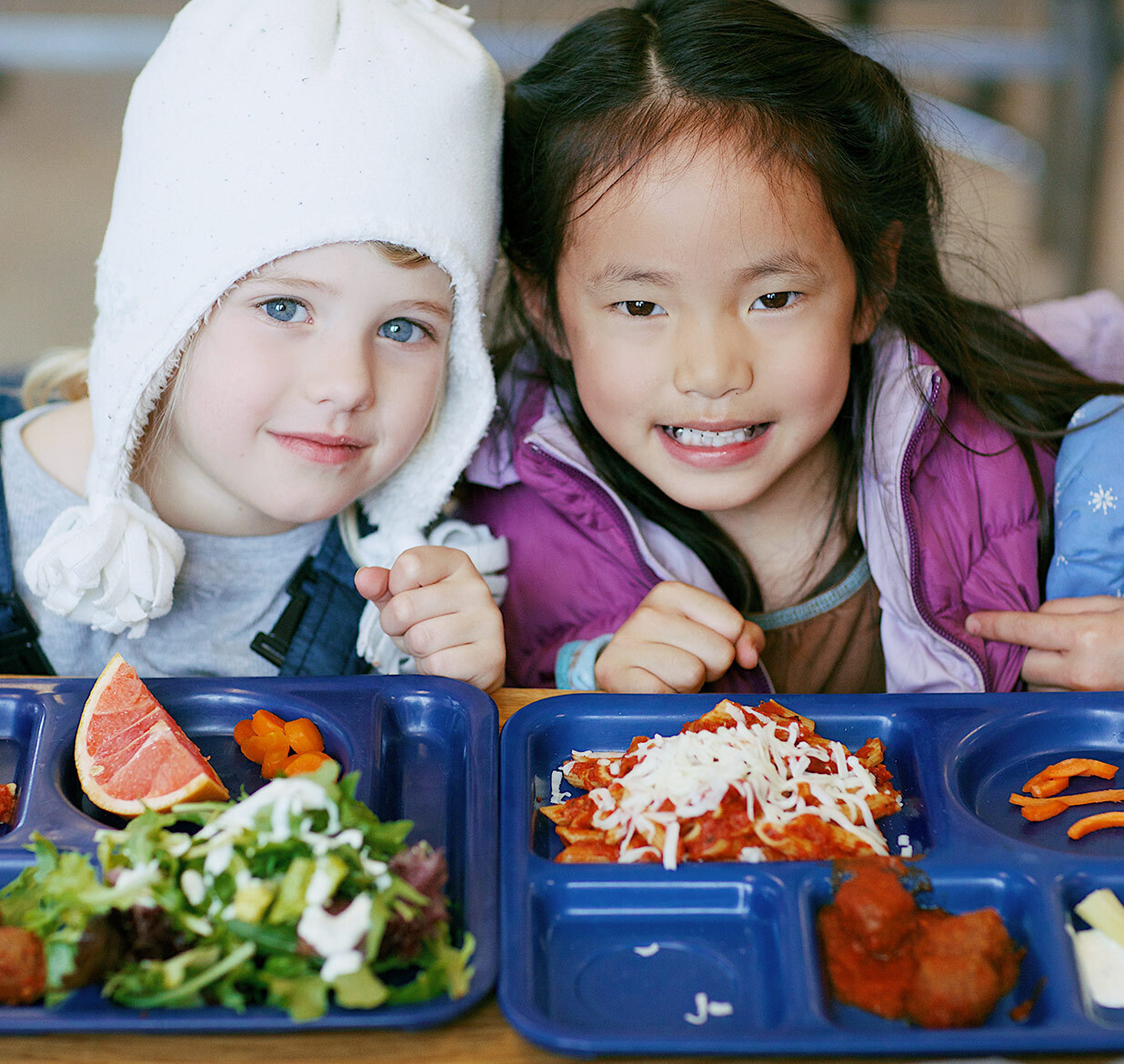
Garden Grant Program
The Whole Kids Foundation runs a grant program that provides funds for schools to support new or existing edible gardens. Their program is meant to support students feeling connected to their food and to encourage curiosity around food.
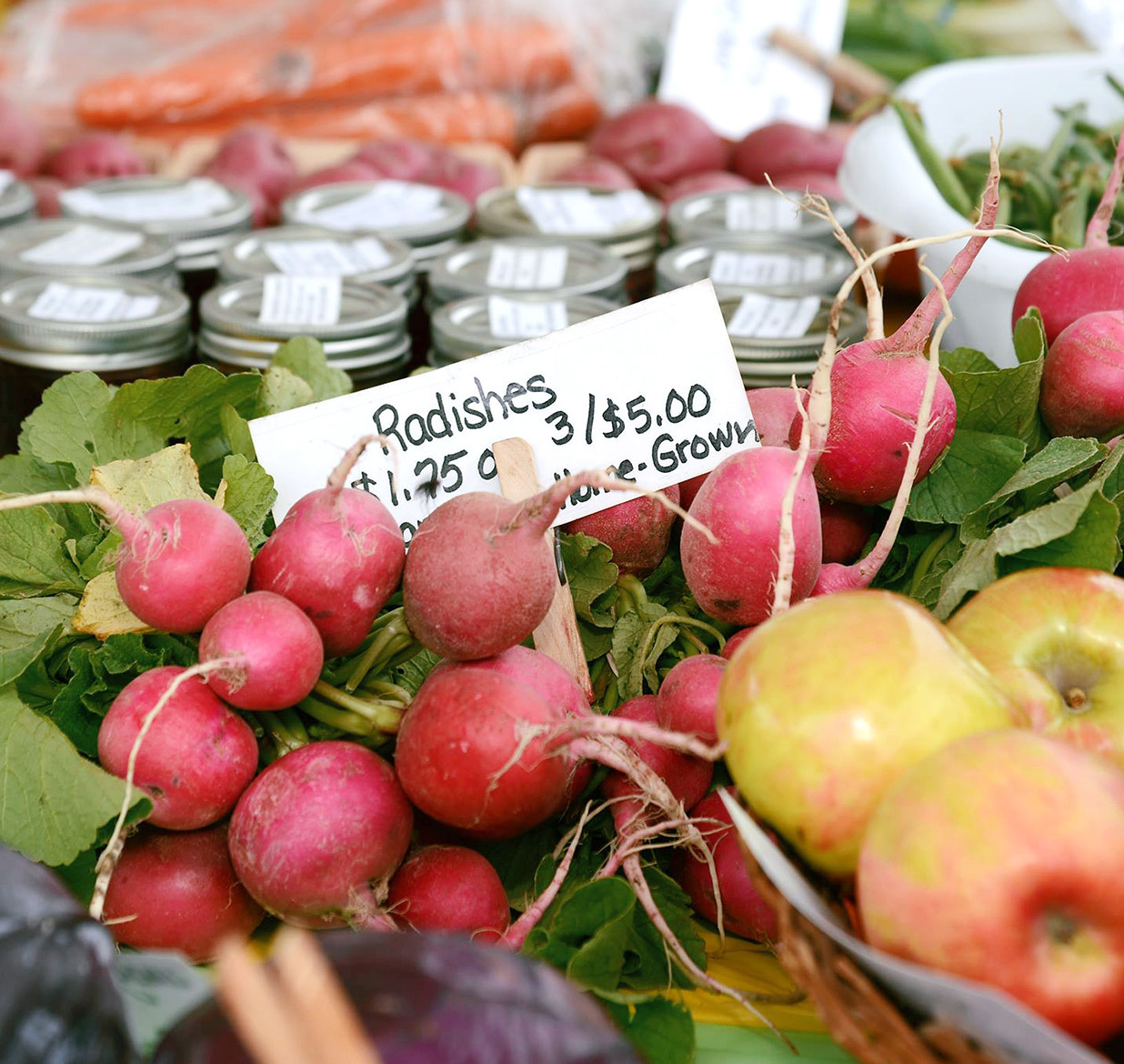
USDA Grants
School administration can apply for a variety of grants through the USDA. These grants are intended to provide financial support for schools to improve their healthy food programming and offerings, and include: (1) The Farm to School Grant which subsidizes food when districts partner with local farmers, ranchers and food producers; (2) Fresh Fruit and Vegetable Program which subsidizes schools’ effort to add more fresh produce to their lunch offerings; and (3) Team Nutrition Training Grants which support training food services staff about nutrition.
In-School Activity Kits & Guides
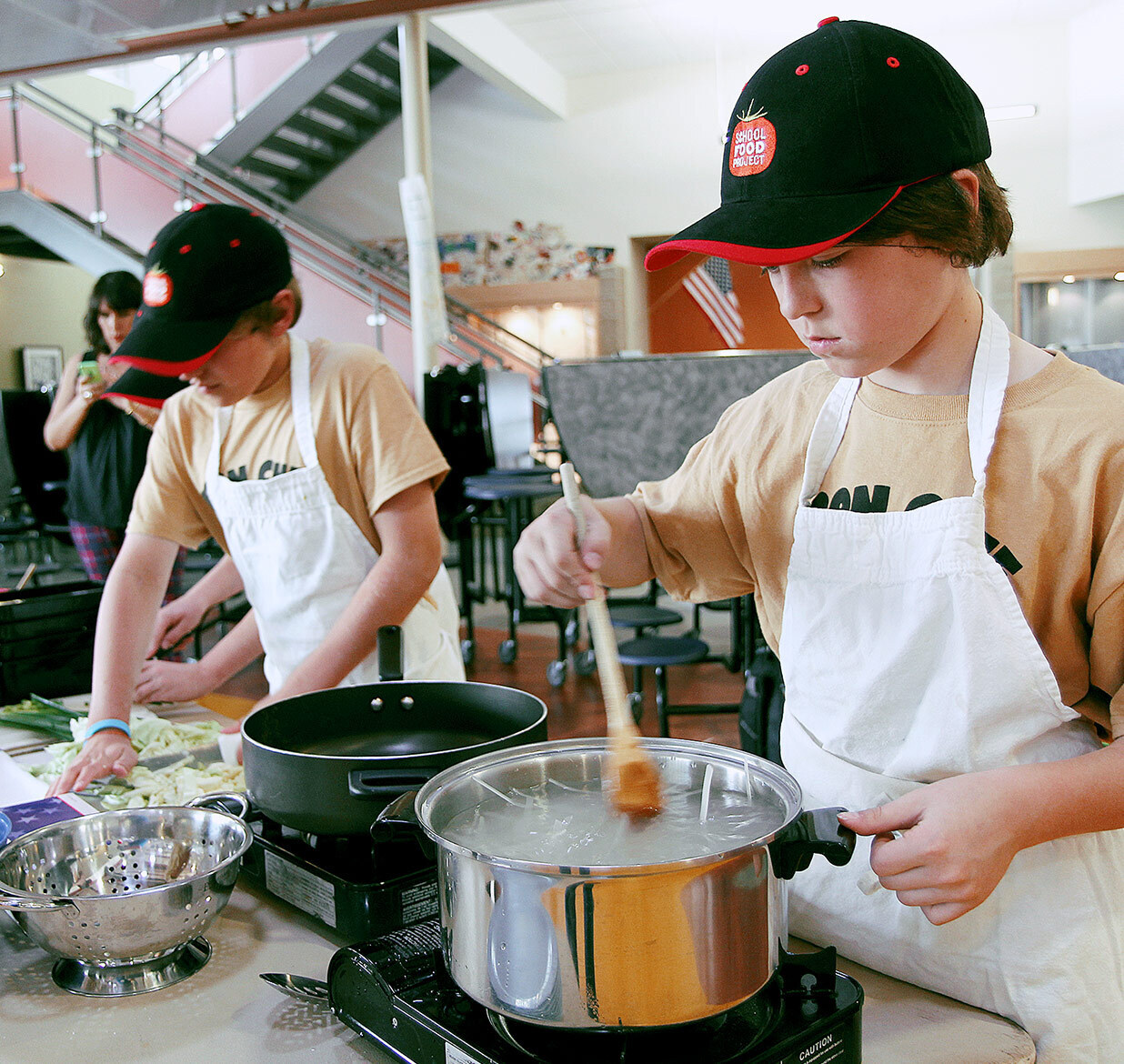

Healthy Food Signage & Education
The Lunch Box provides activities and materials to encourage students to try new fruits and vegetables and to help them understand the role fresh produce plays in a healthy diet.

How Fruits & Vegetables Get to the Plate
This toolkit from The Center for Ecoliteracy offers cross-curricular enrichment activities to help students learn how fruits and vegetables grow, how they get from the field to the plate, and what makes each unique.
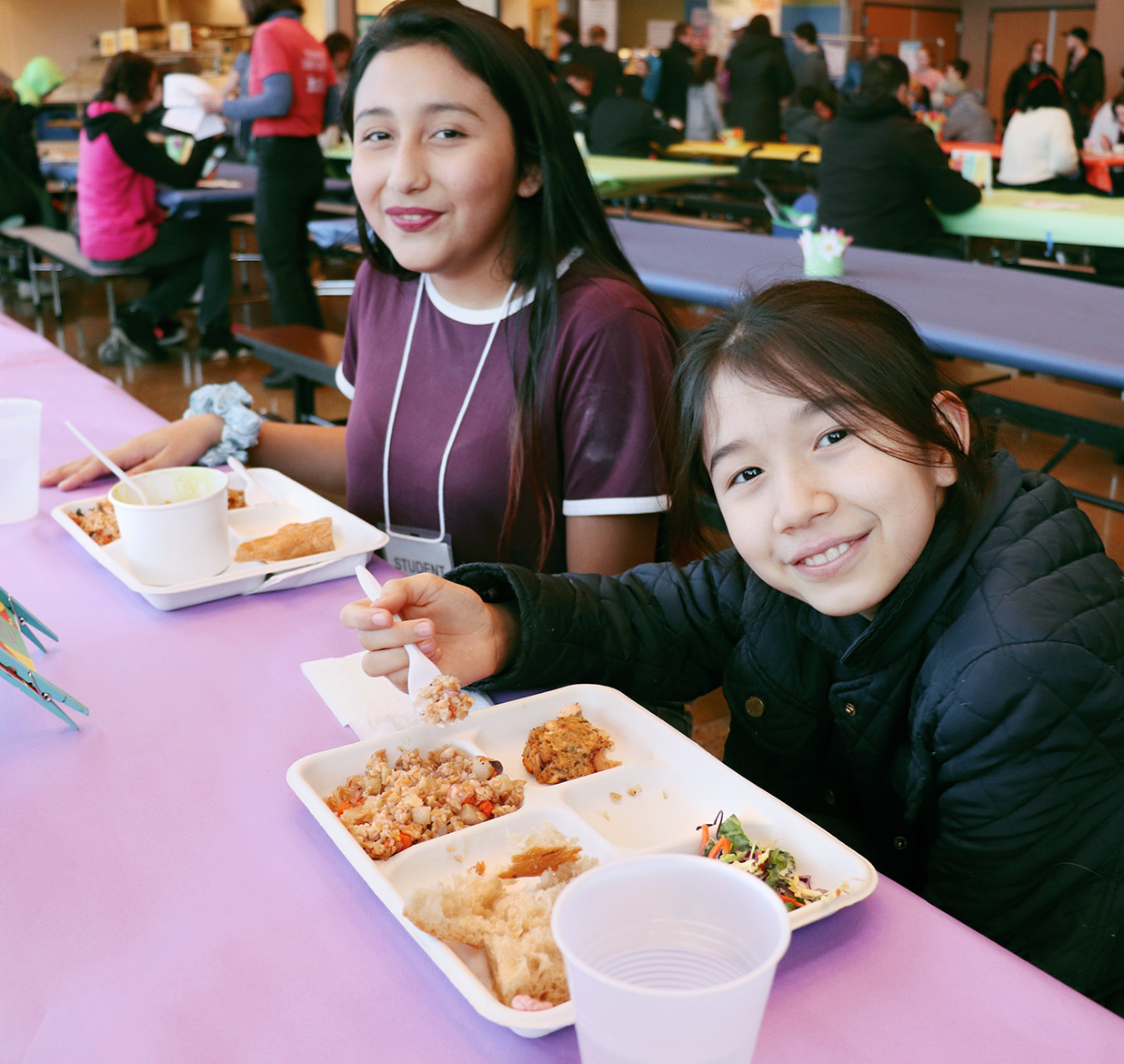
Media Influence on Attitudes About Food
Media Smart Youth is a free program devoted to educating students ages 11 through 13 about how their attitudes toward food and nutrition may be influenced by the media. Teaching kids early about how they’re being targeted by food advertisements empowers youth to make informed food choices.

School Gardens
Gardening Curriculum
Teaching Gardens, created by the American Heart Association, presents eleven garden-themed lesson plans aimed at pre-K to fifth grade students. These fun, educational, hands-on lessons teach students how to plant seeds, take care of growing plants, harvest produce, and understand healthy eating habits.
Gardening Guide
The Slow Food USA guide provides a clear roadmap for developing a successful school garden program. The How to Start a Slow Foods School Project guide highlights design, implementation, curriculum, fundraising, working with volunteers, and school policy.


School Gardens
Gardening Curriculum
Teaching Gardens, created by the American Heart Association, presents eleven garden-themed lesson plans aimed at pre-K to fifth grade students. These fun, educational, hands-on lessons teach students how to plant seeds, take care of growing plants, harvest produce, and understand healthy eating habits.
Gardening Guide
The Slow Food USA guide provides a clear roadmap for developing a successful school garden program. The How to Start a Slow Foods School Project guide highlights design, implementation, curriculum, fundraising, working with volunteers, and school policy.
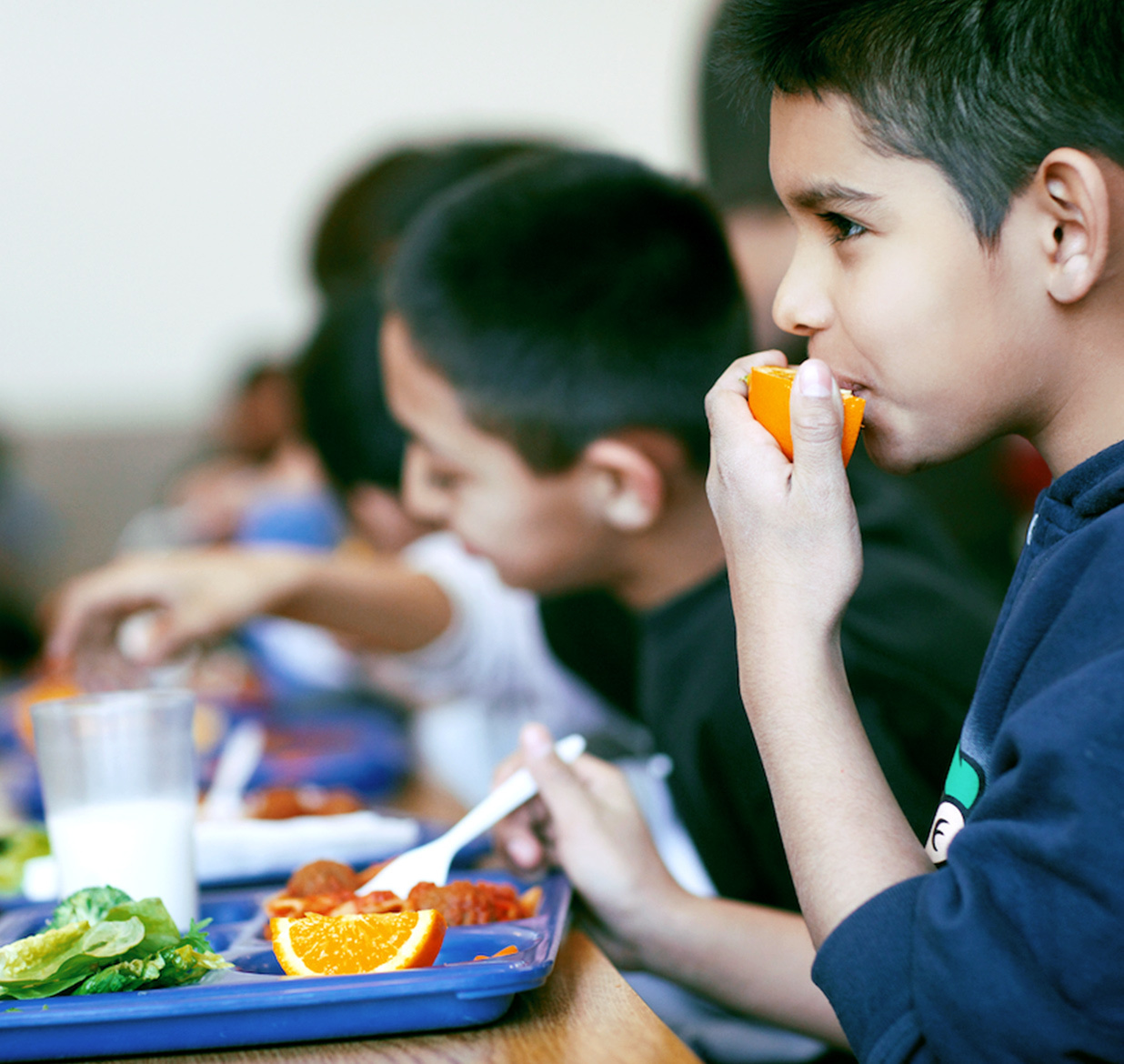
Farm to School Initiatives
Community Food System Support
The USDA Community Food Systems website offers a wealth of resources to connect farms to schools. The website includes information about their flagship grant program, a toolkit for planning a farm to school program, and resources for healthy menus in schools.
Advocacy and Access to Local Farms
The National Farm to School Network provides information on resources, advocacy and connecting with local food and agriculture businesses in your community. They also provide educational materials, such as: outlines for cooking lessons, field trips and school gardens.

Farm to School Initiatives
Community Food System Support
The USDA Community Food Systems website offers a wealth of resources to connect farms to schools. The website includes information about their flagship grant program, a toolkit for planning a farm to school program, and resources for healthy menus in schools.
Advocacy and Access to Local Farms
The National Farm to School Network provides information on resources, advocacy and connecting with local food and agriculture businesses in your community. They also provide educational materials, such as: outlines for cooking lessons, field trips and school gardens.
Identify Action Steps
Once you’ve selected a program to implement at your school, it’s important to determine what actions need to take place in order to see it through from start to finish. Create a step-by-step plan in one of your regular advocacy group meetings. In subsequent meetings be sure to check on progress, troubleshoot obstacles, and refresh on inspiration to continue to move towards implementation.
Here’s an example of how to create actionable steps for a salad bar program in your school:
Determine how often your school serves fresh fruits and vegetables to students. Find out how the fruits and vegetables are served — are they placed on students’ trays, or can students choose them? Talking with the food service director (FSD) can give insight into operational challenges regarding procurement of fresh produce, such as: cost, storage limitations, or food waste.
Research salad bar programs and gather evidence about the benefits. Find other schools’ innovative solutions to the challenges your FSD faces.
Gather information about grant programs and other resources that help schools implement salad bar programs. Salad Bars to Schools is a great place to start.
Create a brief, straightforward presentation making the case for implementing a salad bar, including why it is important and what the benefits are.
Request a meeting with school administration and/or the FSD to present your case. A formal request in writing can be more effective than an email or phone call.
Deliver your presentation at the meeting.
Follow up with key decision makers.
Once the new salad bar program is approved, create a communications plan to inform the school community about it, including parents, students, teachers, custodians, etc. You can work with the PTO/PTA and school staff to access communication channels.
Create a family/community volunteer program to help younger students learn how to use a salad bar in the first few weeks of its launch (etiquette and hygiene, taking only what they’ll eat, etc.).
Spread the word about the success of the salad bar program through school newsletters.
You Did It!
Take a moment to pat yourself on the back for learning about and building school food advocacy in your community. Now is the time to get inspired and keep learning!

